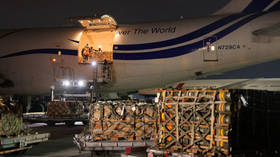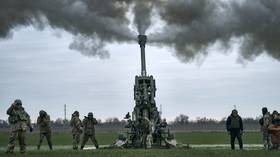Global warming hits Greenland: disaster or profit?
Melting ice caps mean that one of the world's largest islands, Greenland, is getting closer to discovering the vast oil reserves, thought to exist beneath its icy waters.
During these tough economic times, Greenland could be reaping the benefits from climate change, but global warming could also freeze-out some of the country’s most-lucrative businesses.
The coastal town of Ilulissat is one of the few places on earth where climate change is happening so fast you can almost see it – a mere decade is enough.
“We don’t see those tall icebergs today,” said Steen Bangsgaard, Commercial director of the Ilulisat Chamber of Commerce. “The end of the fjord was packed with very tall icebergs and we don’t see those anymore”.
The Illulisat glacier is Greenland’s number one tourist destination. UNESCO made the town’s fjord and glacier a world heritage site in 2004.
The Illulisat glacier is the channel through which the massive Kangier glacier churns its way towards the sea, carving up icebergs with dramatic regularity. It is one of the most productive glaciers in the northern hemisphere, producing some 10 per cent of Greenland’s icebergs. But, it is getting smaller – scientists think it has already shrunk by some 15 km in the past five years alone. It is now the smallest it has been in 150 years.
And the retreating glacier is symptomatic of what is happening across the ice sheet that covers over 80 per cent of Greenland’s vast territory, which is four times the size of France.
This is a major concern for many, especially considering the UN climate report does not account for the melting of Antarctica and Greenland when it predicts a global sea level rise over the next 100 years.
Adding contributions from both melting poles, sea levels could rise by more than a meter over the next century. The science is simple: temperatures are getting warmer meaning the ice is melting at ever increasing speeds.
But in few parts of the world is climate change more personal than Greenland. Locals have lived off the land, fishing and hunting, for generations. But times are changing.
Fisherman Ewald Schmidt, says as the water is getting warmer, it is making the fish more difficult to catch.
“The halibut, our most important fish, is now moving north, like the shrimp”.
Ewald’s bosses say it is good news commercially, and rising temperatures could even bring welcome changes, such as the return of prized cod to Greenland’s waters. But existing industries and jobs will suffer.
As Bjorn Hansen, Royal Greenland's Prawn Production Manager notes, in he last few years the prawns have been moving from the southern parts up north, so in his opinion, in ten years five factories will close in the south.
Greenland’s politicians, though, prefer to look on the bright side. A Danish protectorate – the Island is loosening ties with Copenhagen, after voting for greater autonomy in a recent referendum. And that could mean a greater share of the vast mineral and oil reserves thought to lurk beneath the icy waters. Up to 100 billion barrels of oil by some estimates – that is almost half the size of Saudi Arabia’s entire reserves.
Kim Kielsen, the Minister for Infrastructure, Climate and the Environment, says they still have not found any oil, but they know it is there, in the Disco Bay area.
“But we’ll only drill defensively as we must preserve all our resources for future generations,” he noted.
If the Arctic’s summer waters are truly ice-free in five to ten years time – much sooner than previously feared – increased exploration will be much easier. But environmentalists ask, at what cost?












